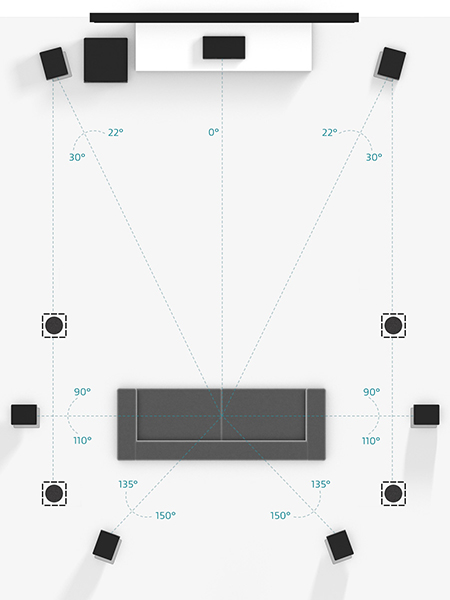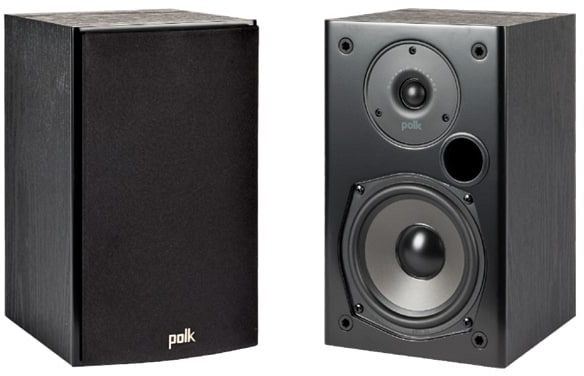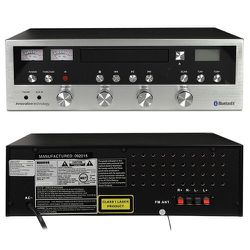
Dolbyatmos is the next level in surround sound tech. You can experience a truly immersive audio experience that makes you feel as if you are right there with the action. It is easy to install, requiring only an AV receiver capable of Dolby atmos.
How to Set Up a Dolby Atmos Home Theater System
Dolby atmos home theater systems offer a fantastic way to watch your favorite TV shows and movies with surround sound. Dolby atmos is an object-based sound format that enhances the traditional 7.1 surround sound format. It allows sounds to hover around the room and not just be played through speakers.
A 7.1 speaker can be upgraded to Dolby Asmos by adding two height (or overhead) speakers. This is usually an additional cost of $100-$500. If you have specific needs, you might also consider purchasing Dolby atmos-enabled modules. These speakers allow you to install overhead speakers without needing to add speakers to the ceiling.

How to Position Dolby Atmos Speakers
It is important to understand the purpose and location of each speaker. Place your ceiling speakers (called top front, top rear, and front surround) in the left and right pair. The directional placement of these speakers is important, and you'll need to be sure that they are placed at a 45-degree angle from your listening position.
Dolby Atmos Objects & the Mixer
A mixer who is creating a Dolby-Atmos soundtrack can assign each track with an "object". An object is a piece of information that can be associated with a specific location in the theater. The object can then be moved and changed, resulting in a completely immersive experience.
To achieve this, the mixer uses the 7.1.2 format. It is equivalent in size to a 7.1 system, but with one stereo pair each of height channels. Dolby-Atmos offers the possibility of using a 5.1.2 layout. This format is equivalent to an 5.1 system with one stereo set of height channels, and two standard stereos in the rear surround.
Dolby Atmos activates on most AV Receivers
A modern AV receiver can activate Dolby ATmos. It will automatically upmix any 5.1 audio you have playing to the Atmos high speakers in your system once it is activated.

Dolby Audio is available on almost all streaming services, including Amazon Prime Video and Netflix. Dolby Atmos is supported by most smart TV models.
Klipsch R-820F offers the perfect Dolby atmos surround sound system to allow you to fully immerse yourself in your favorite TV shows and movies. Klipsch's signature controlled direction and acoustic technologies make the KlipschR-820F a great surround sound system that brings the magic from the big screen into your home.
FAQ
What are the different types?
There are four main types of speakers: bookshelf speakers, center channel speakers, subwoofers, and tower speakers. Each has its advantages and disadvantages. These are some of the major differences among these speakers.
Bookshelves speakers look similar to traditional bookshelves. They usually rest on top of a flat surface such as a desk or shelf.
You can find center channels in full-size speaker cabinets. They can be found on the floor near your sofa or recliner.
Subwoofers can produce deep bass sounds. Subwoofers are usually only noticed by people who turn up the volume.
Tower speakers, which are big boxes that can stand on its own, are often large. They're great for creating powerful audio throughout a large area.
It is possible to combine multiple speakers into one system. Many people add towers to create a stronger sound.
What is better a 5.1 system than a soundbar or a soundbar?
The answer is both yes, and no. Yes, because it will create a more immersive home theatre experience for most users. No, because it doesn't mean you'll enjoy watching movies in bed.
A home cinema setup will require a dedicated space. You'll have to invest a lot of money and space to make it happen.
However, there are many other ways to achieve this effect without spending too much time or effort.
You could use a projector-based setup to project images onto a wall instead of directly onto the screen.
You don't need a large television display. You can choose smaller screens (TVs) instead.
You can add speakers to the corners. These speakers will allow you to listen to music or watch videos without disturbing others.
You can do most things with a soundbar. However, if you really want to get lost in a movie, a home cinema setup is necessary.
Which sound system is best?
An excellent audio setup is vital for any home entertainment area. Your home theater will suffer if the speakers you use aren't producing the right sound quality to create an immersive experience.
A great sound system creates a full-bodied, rich listening experience. You have many options when it comes to choosing the right sound system. These include size, frequency response, power handling, and more.
The size of your space will determine which type of speaker system you need. In general, small rooms require smaller speakers. For larger spaces, bigger speakers may be required. Think about how much space you have between ceiling and floor as well as where you plan on placing the speakers.
Frequency response is another important aspect to consider. Frequency response refers to the frequency range that each speaker reproduces. There are usually two channels in most systems: left/right (L/R), and front/back(FR/RB). Each channel covers a certain area of spectrum. Consider speakers with similar coverage.
Power handling is the power that each speaker produces. Some speakers produce more power than others. You should look for models that are within your budget and suit your needs.
To ensure maximum speaker performance, connect them correctly to your amp. Your amp should have speakers connected via either a direct connection, or a receiver. To avoid damaging your speakers, keep the volume level below 50 percent.
What are my options in choosing a home cinema system? What factors do I need to consider?
There are many options when shopping for a home theatre system. Each type has its pros and cons.
For example, a 5.1 surround sound system will give you five channels of sound: two front left, right, center, and subwoofer; one rear left, right, and center channel; and one tweeter channel. You will hear clear dialogue through the speakers on the left and right, and you'll also get rich, deep sound from the subwoofer or center channel.
This setup lets people hear every detail in movies. Others enjoy watching movies alongside friends and family who have different musical tastes.
No matter your preference, ensure that you buy the home theater system that best suits your needs.
Imagine, for example, that you prefer to listen to music than watch television. In that case, you might purchase a wireless stereo system instead of a surround sound system.
A curved or flat screen is another factor you should consider. Flat screens are easy to install because they don't curve at the edges.
But they're not ideal for viewing images. Curved screens are much more comfortable and offer wider viewing angles.
But installing a curved screen requires professional installation services. Ask your dealer for a warranty on a TV you intend to purchase.
When you are choosing a home theater system, the first thing to consider is the space that will house it.
In general, bigger rooms need larger speakers. A room measuring 6 1/2 feet in width and 8 feet tall would require speakers with a width 3 feet and height 4 feet.
Remember that bigger speakers will generally be more expensive. If you are planning on installing your home theater system into a large space, budget accordingly.
Remember to include all other entertainment systems you intend on buying. It may surprise you to see how quickly your home theater expenses can increase!
What type of speakers should I use for my living area?
If you are looking to provide high-quality audio then bookshelf speaker may be the best option.
These speakers are small and available in different sizes, depending on the space.
Bookshelves have a great bass response and are preferred by most people. The more bass you have, the better your overall sound.
It is also simple to install and use. It is necessary to plug the device into the wall socket.
The subwoofer is another popular option for audiophiles. These speakers produce deep bass tones that help enhance the overall performance of your home entertainment system.
If you're willing to pay a bit more for this feature, you can easily find a subwoofer which will work in your living space.
Keep in mind, however, that not all rooms are suitable for subwoofers. If you've got a very wide or tall living room, then you might be unable to place any subwoofers due to their size.
Nonetheless, this shouldn't be a concern. There are other options such as ceiling speakers or bookshelves.
Statistics
- According to a study released In March 2020, the six biggest tech development companies, Proceedings of the National Academy of Sciences of the United States of America (en.wikipedia.org)
- $10 off TurboTax Premier Service code 2022 H&R Block Coupon 20% (wired.com)
- As of winter 2017, it is estimated by NPR and Edison Research that 39 million Americans (16% of the population over 18) own a smart speaker. (en.wikipedia.org)
- Amazon is likely to release new models very soon (there is an event on September 28), so you should wait until that event is over to buy. (wired.com)
- According to Henriques, the sound system has also played an influential role in the global influence of Jamaican music internationally. (en.wikipedia.org)
External Links
How To
How can wireless speakers be powered?
You can choose between two types of wireless speaker: battery-powered or plug-in-powered. Both require power from an external source. They can be powered by a wall socket. However, powering them wirelessly takes more planning.
Most wireless speaker systems rely on solar panels or batteries to power their speakers. These devices are limited in range and must be kept close to a charging station. The device will cease to function if you move it from its charging station.
It is best to have your home entertainment system run on rechargeable batteries to avoid this problem. These devices last longer than standard battery and are easier for you to install.
This setup lets you place your equipment wherever it is most convenient. You can set your system up next to your bed to listen to music when you're asleep. Mount your speakers underneath your cabinets and you can listen to music while you cook.
Plan how long each component takes to charge. This will ensure that your system runs smoothly. It may take 3 hours for your amplifier to fully charge while charging your Bluetooth receiver could take only 30 minutes. This should be adjusted for downtime.
You can use both wireless and wired components together. The wireless transmitter allows you to position your speakers anywhere you like.
A good rule of thumb is always to try to buy products designed to work together. Consider buying both an amplifier and a Bluetooth receiver at once. They should fit into one another's slots to maximize their combined features.